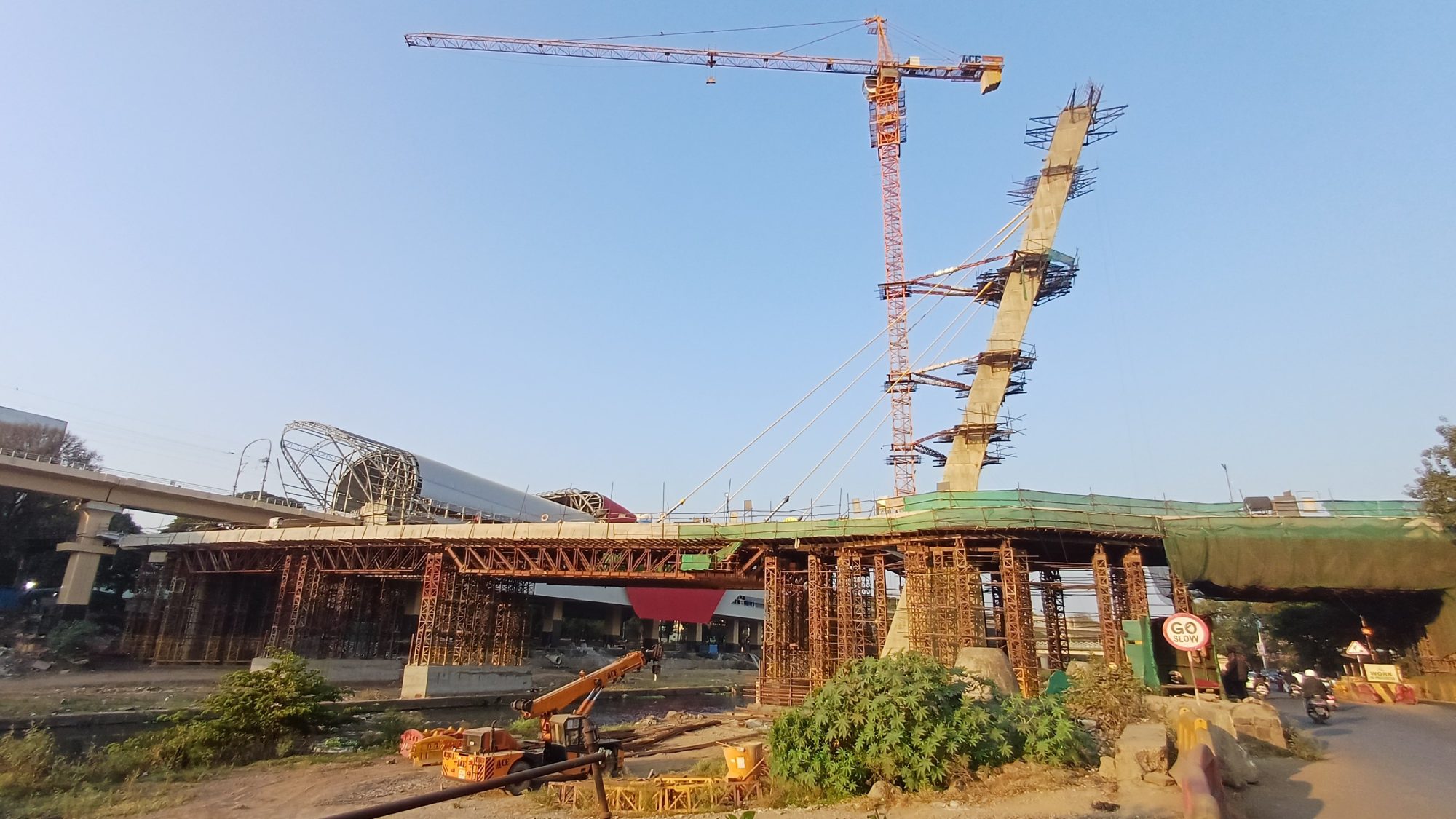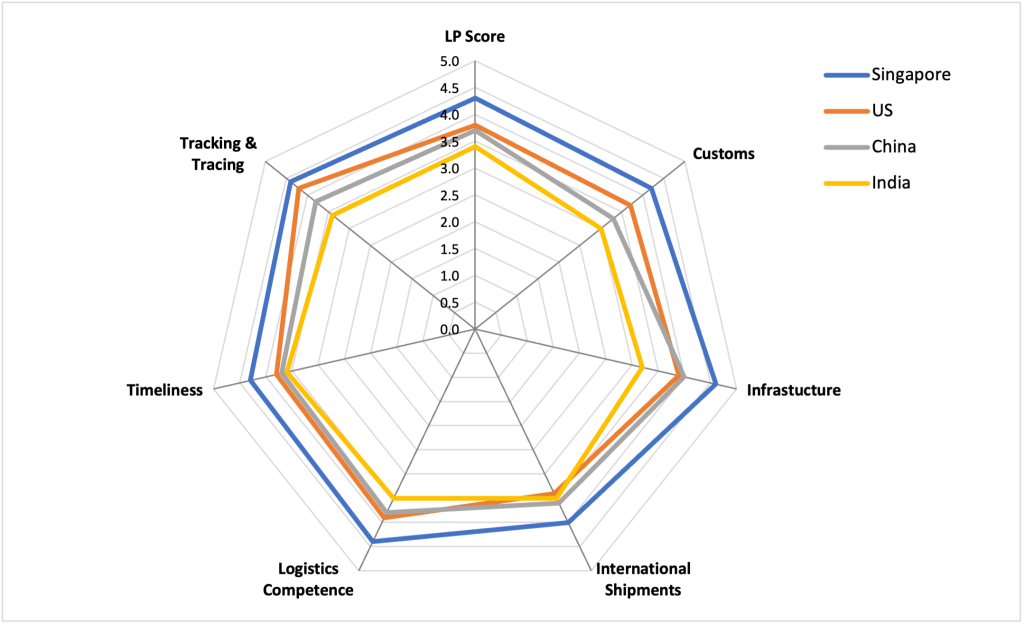
Title: Commentary: Significance and Implications of National Logistics Policy of India
In September 2022, India’s government released the long-awaited National Logistics Policy (NLP), a comprehensive, cross-sectoral framework to upgrade the logistics infrastructure and create an integrated logistics ecosystem in the country. More precisely, the NLP envisages improving transportation infrastructure facilities, including road, rail, air, and water transportation. Stakeholders, including business owners, management experts, and supply chain professionals, across all sectors applauded the move. The NLP gains additional significance in the current context, where global businesses have begun to restructure their supply chains in response to the China Plus One strategy. Accordingly, this paper explores the scope and implications of the NLP and how it will meet the demands of India’s growing economy.
Introduction
Logistics is an integral part of the supply chain process that ensures the efficient flow and storage of goods and services from the point of origin to the point of consumption. India’s National Logistics Policy (NLP) is considered a game changer in the transportation sector. The NLP seeks to reduce the logistics cost, making Indian goods more competitive while also promoting economic growth. The policy also aims to leverage emerging digital technologies to improve logistics-related activities such as tracking, customs, and compliance. Furthermore, the NLP will complement the proposed India-Middle East-Europe Economic Corridor (IMEEC) project announced at the G20 leaders’ summit concluded in September 2023. Designed as an alternative to China’s BRI, IMEEC will enhance the global supply chains connecting Europe and Southeast Asia, thereby boosting India’s international trade. As a result, the NLP allows India to attract multinational corporations with manufacturing bases in China that are looking to diversify their supply chain components through the China Plus One strategy. It is essential to understand the stated objectives of a policy with geo-political ramifications, such as that of the NLP.
Objectives of the NLP
In India, logistics is a $200 billion sector with 4.6 billion tons of freight transported annually, 65 percent of which is by road and 27 percent of which is by rail. It is estimated that last-mile delivery–the final stage of the delivery process through which the goods reach the end consumer–costs around 40 percent of the overall logistics cost. As a result, logistics constitutes 13 to 14 percent of India’s GDP as opposed to 8 to 11 percent in most major economies. However, nearly one-third of its logistics spending results from inefficiencies in infrastructure. Additionally, consumers, who are generally not interested in paying for transportation overheads, often pay prices that include transportation costs. Hence, saving on logistics would reduce commodity prices, making India more competitive in global markets, thereby benefiting consumers and manufacturers alike. This would fulfill the NLP’s objective to reduce transportation and logistics costs, improving market efficiency.
In 2014, the World Bank ranked India fifty-fourth among 160 nations in the Logistic Performance Index (LPI). India has since improved consistently, ranking thirty-eight in 2023. This significant leap has resulted from the Prime Minister Gati Shakti projects like the Bharatmala (improving road networks), Sagarmala (for shipping and maritime), Udan (regional airport development program), and Dedicated Freight Corridors (improving rail freight network). Consequently, logistics costs are now 8.35 percent of India’s GDP. The NLP aims to build on these successes to reduce logistics costs to within 5 percent of the GDP and improve India’s rankings in the subsequent editions of LPI. The figure below shows India’s ranking in comparison to Singapore, ranked first, the United States, ranked eighteenth, and China, ranked twentieth.

Figure 1. Logistics Performance Index of major economies
The LP score aggregates six attributes: customs, infrastructure, international shipments, logistics competence, tracking and tracing, and timeliness. The World Bank conducts a worldwide survey of logistical operators including global freight forwarders and express carriers. Freight forwarders are intermediaries that negotiate with transportation services to obtain optimal shipping rates and routes for their clients, while express carriers usually use their own personnel and fleets to distribute goods. These two entities provide feedback on the logistics performance of the countries in which they operate and with which they trade based on the above six attributes. Each survey respondent will rate the six attributes on a five-point rating scale. These scores are then aggregated into a single metric. Figure 1 illustrates the inferior position of the Indian logistics industry relative to other major economies in all the attributes except international shipments in which India’s score is marginally better than the United States. The analysis indicates that infrastructure and customs parameters are particularly inadequate and vulnerable in India. The rail accident in Balasore in Odisha on June 2, 2023, involving the collision of three trains that claimed 288 civilian casualties, highlights the challenges that India faces in modernizing and expanding its rail services. Therefore, India’s government should focus on improving its infrastructure and customs to strengthen its LPI standing. Such interventions would make Indian products more competitive in the global market and increase the chances of India achieving its target of becoming a $5 trillion economy by 2029.
The United States and China as Examples
India should seek to replicate the world’s two major economies: the United States and China. Former US President John F. Kennedy famously stated that “American roads are not good because America is rich, but America is rich because American roads are good.” The Great Depression serves as a great example of when the US federal government was able to create around eight million jobs simply by improving its roads.
Unlike the United States, China opted to invest in its waterways. According to the World Shipping Council, in 2020, seven of the top ten container ports (by volume handled) in the world were in China. Moreover, eighteen ports out of the top fifty ports in the world are either in China or in its claimed provinces. By comparison, only two Indian ports are featured in the top fifty. Large-scale investment in China’s logistics began after they entered the World Trade Organization (WTO) in 2001 and removed restrictions on foreign logistics investments. Initially, foreign capital was allowed only in joint ventures, but by 2005, restrictions were completely lifted. This policy was later complemented by stronger investment from state-backed financial institutions and state-owned logistics companies. Between 2011 and 2021, investment in China’s logistics industry totaled 729.48 billion yuan. Initiated in 2013, the Belt and Road Initiative (BRI), is now poised to connect 149 countries on a transcontinental scale. It is estimated that BRI transport projects, upon completion, could reduce travel times along economic corridors by 12 percent, increase trade between 2.7 percent and 9.7 percent, increase income by up to 3.4 percent, and lift 7.6 million people from extreme poverty. Evidently, China has invested greatly in logistics, making it increasingly competitive in the world market, thereby contributing to a larger share of the global GDP.
The NLP’s Prescriptions
From a regulatory perspective, the NLP pursues an inter-ministerial alliance. Major ministries such as Railways; Road Transport & Highways; Ports, Shipping, and Waterways; and Petroleum & Natural Gas are directed to coordinate to design and implement logistics-related projects. Ensuring cooperation among these ministries should mitigate possible conflicts and streamline the implementation.
The NLP further seeks to leverage modern digital technologies to reform India’s logistical landscape. The technologies that are already in operation include the FASTag, an electronic toll collection system; the GST e-way bill, a tool to track the movement of goods and check tax evasion; the e-sanchit, a paperless platform to automate the export-import trade process; and the Open Network for Digital Commerce (ONDC), an open e-commerce and faceless assessment platform for the customs. Furthermore, the Prime Minister Gati Shakti project has begun to employ the Digital Master Planning tools developed by BISAG-N (Bhaskaracharya National Institute for Space Applications and Geoinformatics) to create logistics project plans. These planning tools employ a dynamic Geographic Information System (GIS) platform. The additional projects being developed as part of the NLP include three major entities. First, the Unified Logistics Interface Platform (ULIP) provides a unified portal that integrates digital services related to logistics such as container tracking, monthly performance analytics, and benchmarking services to help exporters manage their consignments. Second, the Ease-of-Logistics Services (E-Logs) portal facilitates reporting and resolving grievances to governments. Third, the Integration of Digital System (IDS) facilitates coordinating efforts across various ministries. These interventions will ensure system transparency.
A strong infrastructure for logistics is essential for the manufacturing industry to prosper. Indeed, the manufacturing sector views logistics as being analogous to the nervous system in the human body. With the NLP, India can become the next manufacturing hub of the world through its “MAKE IN INDIA” campaign. Launched in 2014, the Make in India initiative strives to inspire confidence in India’s capabilities amongst potential partners abroad. Fundamentally, this scheme updates information about business opportunities and provides a framework for a vast amount of technical information on twenty-five industry sectors. In addition to supporting the Make in India campaign, the NLP would strengthen the Indian agricultural sector, which currently experiences a process loss between production and consumption. In developed countries, the post-harvest loss is between 10 and 15 percent. Farmers in India incur post-harvest losses amounting to around INR 92,6510 million annually due to poor storage and logistics facilities. Having a robust logistics network will reduce the time needed for agricultural products to reach consumers, limiting overall wastage. Both the manufacturing and agricultural sectors, which are direct beneficiaries of the NLP, are also highly codependent on service sectors such as banking, insurance, information technology (IT), and consultancy, among others. Hence, any improvements in manufacturing and agriculture are likely to bolster the service sectors. As a result, coordination improvements will boost sector speed, value creation, and entrepreneurship across sectors of the economy.
Conclusion
Structural reforms in the logistics sector, particularly in infrastructure and customs, were long overdue in India. In this direction, the NLP facilitates rapid technology adoption and creates synergies among government ministries in developing and implementing logistics projects. The methodology proposed to achieve a balanced modal mix by harmonizing roadways, railways, airways, and waterways is promising and should yield strong results. The proposed regime promises quick last-mile delivery, ends transport-related issues, and drives efficiency for manufacturers and farmers. Indian state governments should honor the policy and align their goals with the NLP to ensure its success. Furthermore, the policymakers should seek to match the strategies employed by the United States and China in the logistics sector. To emulate China’s infrastructure policies during the early 2000s, India’s government must continue to encourage private participation in infrastructure development and manage the operations of logistics terminals. If not acted on promptly, logistics may remain a bottleneck in the path of development, constraining the progress in both the primary and secondary sectors of India’s economy.
…
Vishnu C. Rajan, PhD
Dr. Vishnu is a faculty member in the Department of Humanities and Social Sciences, Indian Institution of Technology Tirupati, where he teaches courses related to supply chain management and analytics. His current research interests include supply chain risk management, operations research, reliability engineering, manufacturing systems management, and data analytics.
L. R. K. Krishnan, PhD
Prof. Krishnan is a faculty member at the VIT Business School, Vellore Institute of Technology, Chennai, where he teaches courses related to Human Resources Management and Public Policy. His current research interests are Organization Behaviour, Industrial Relations, and Labour Laws.
Image Credit: DesiBoy101, CC BY 4.0, via Wikimedia Commons.
Recommended Articles

Amid stalled U.S. federal climate engagement and intensifying transatlantic climate risks, subnational diplomacy has emerged as a resilient avenue for cooperation. This article proposes a Transatlantic Subnational Resilience Framework (TSRF)…

The 1997 hijab ban in Türkiye left lasting effects on Muslim women’s psychological, social, and religious identities, shaping their experiences across academia, bureaucracy, and politics. Evidence from interviews…

This article advances the idea that teaching children their mother tongues and learning adjacent national languages offers better prospects for consolidating nation-building and contributing to cultural preservation. Kenya’s case illustrates…